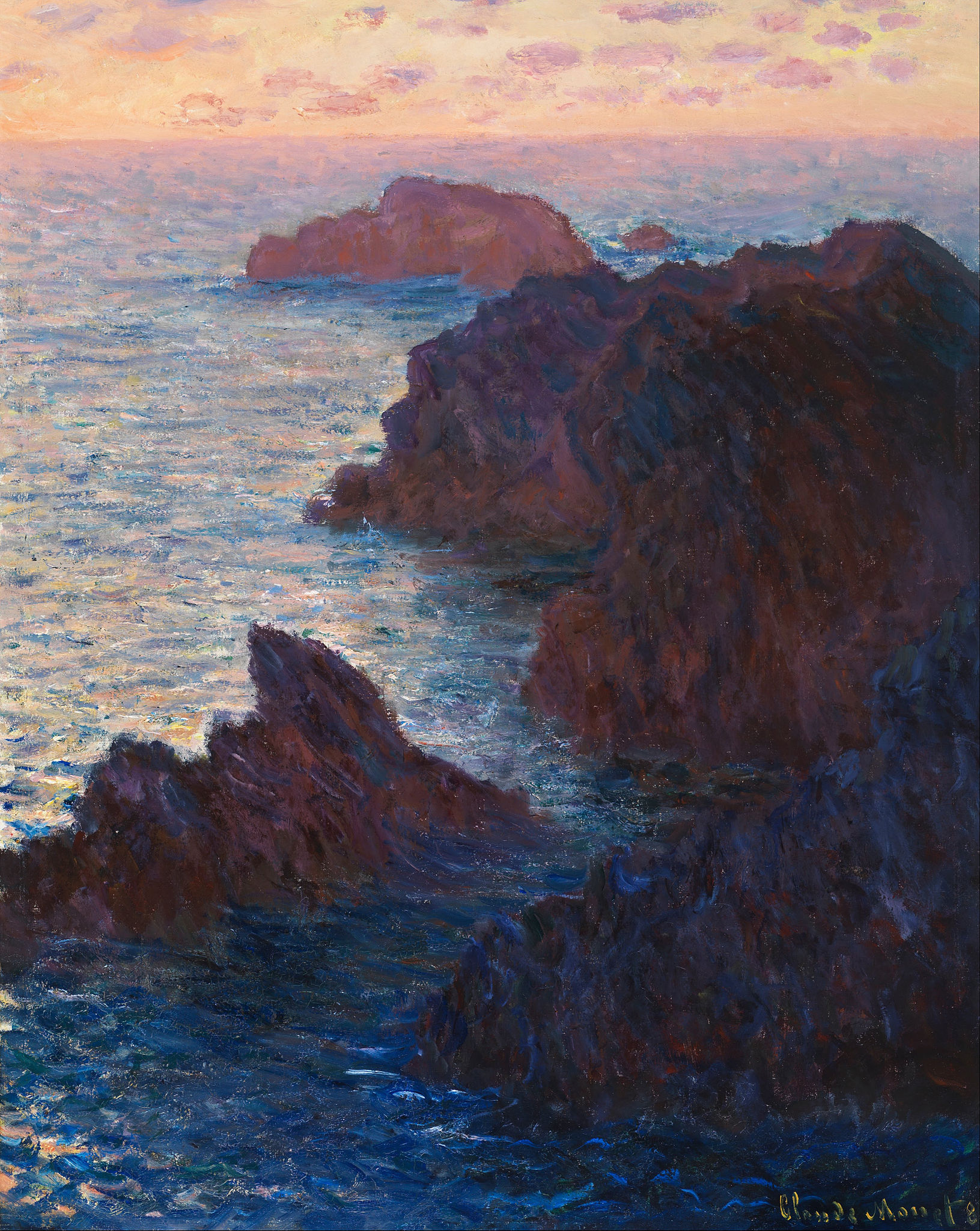In Autumn 1886, Claude Monet sought out rugged and barren terrain on the island of Belle-Île-en-Mer off the coast of Brittany. Centering his activity in the village of Kervilahouen on the Atlantic side of the island, he wrote to fellow Impressionist Gustave Caillebotte, “I’ve been here a month, and I’m grinding away; I’m in a magnificent region of wilderness, a tremendous heap of rocks and sea unbelievable for its colors; well, I’m very enthusiastic.” Still, Monet confessed to having trouble painting the wild ocean because he was used to painting the calmer channel waters.
In Rocks at Belle-Île, Port-Domois, Monet depicted the grim sea beating away at the barren rocks, a theme he repeated and varied numerous times. He was sensitive to the topography of his surroundings and the need to alter his manner of looking accordingly. The colors, forms, and atmosphere of this magnificent painting reveal that Monet was concerned as much with conveying turbulent emotion as with recording the appearance of a particular site.
P.S. Claude Monet was known as a light painter, but he also loved to depict seas, rivers, and ponds. Learn about this great artist through 10 famous Monet masterpieces!


 Claude Monet
Claude Monet